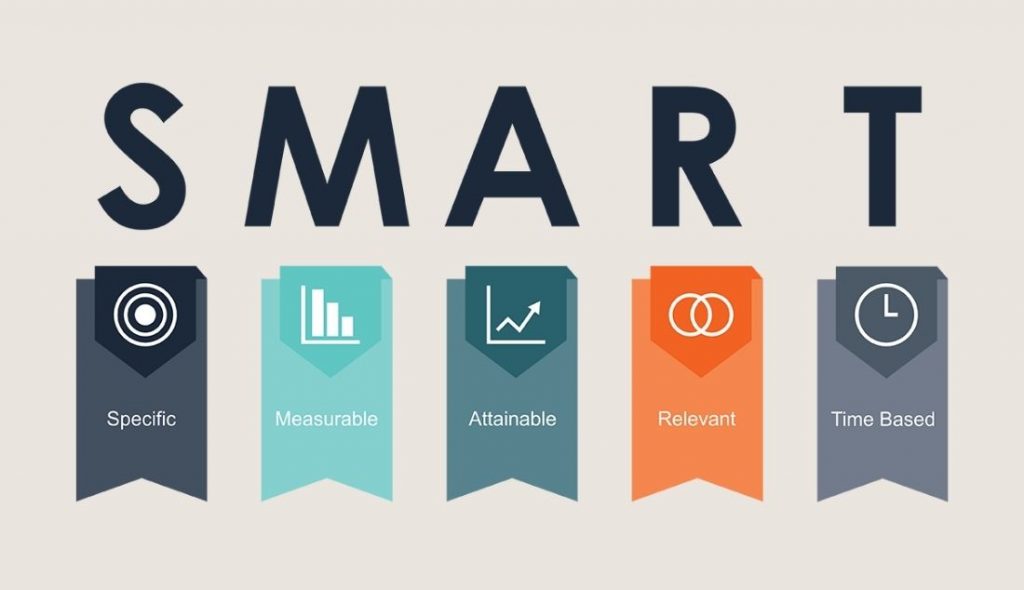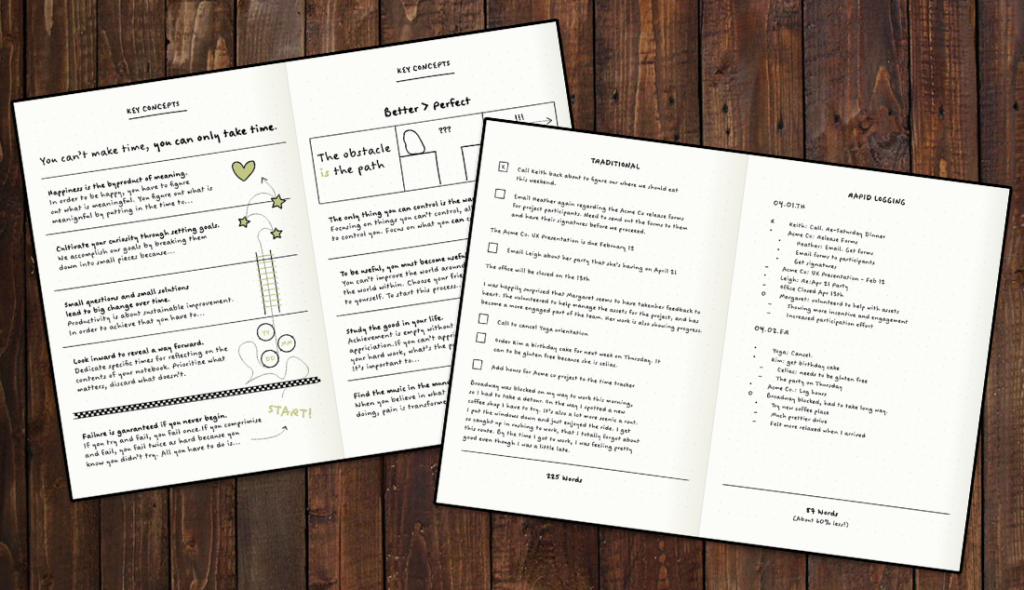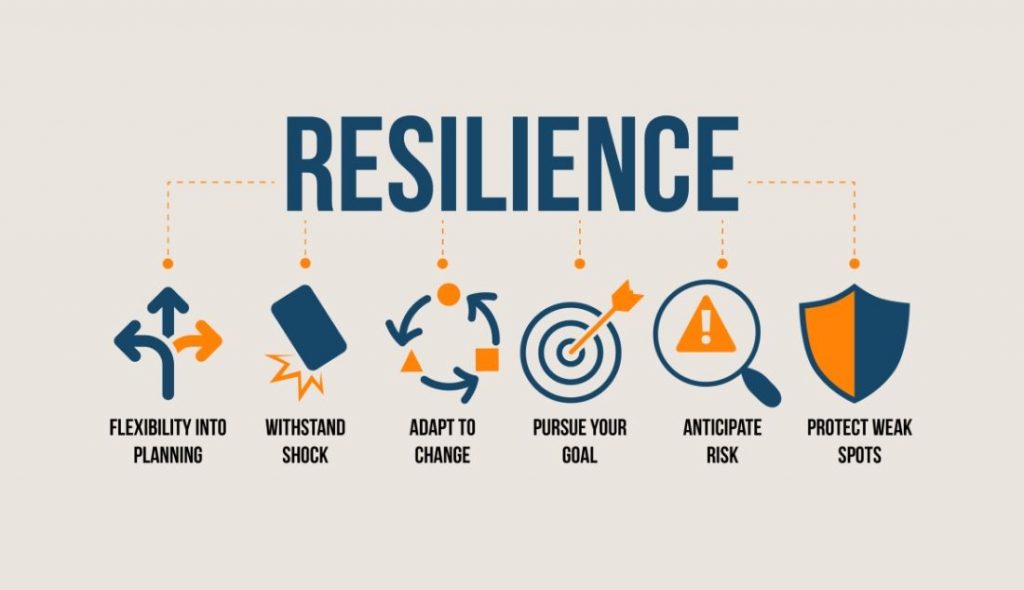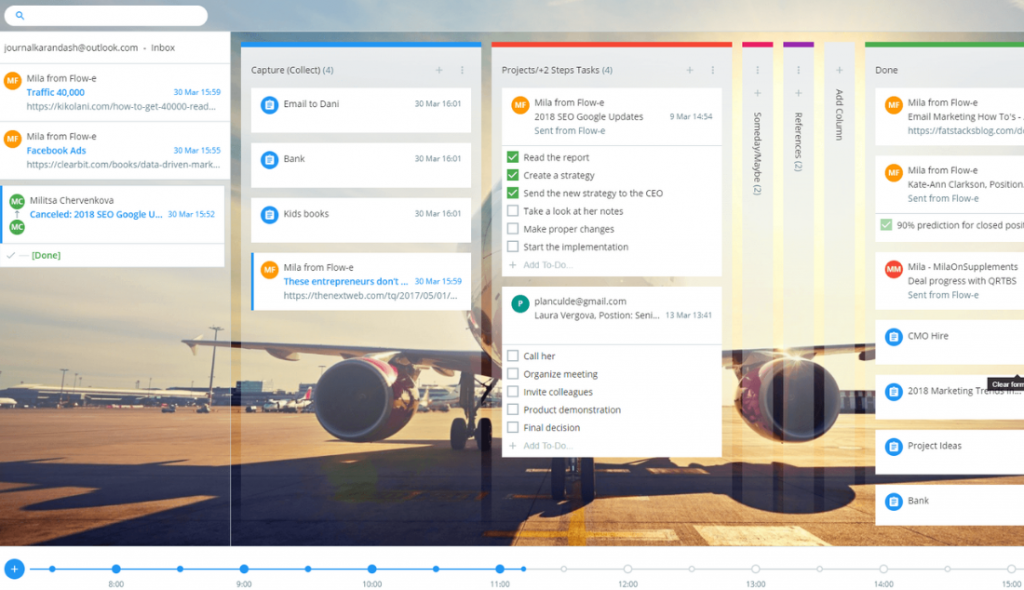The post 3 Critical Shifts You Must Make appeared first on Wealthy Mind.
]]>Well, if you follow a lot of online coaches and marketers, you will hear a lot about ‘the laptop lifestyle’ or a ‘freedom business’. I bet you wonder how that’s possible when you feel like you are constantly working 24/7 just trying to attract your next client?
Building a coaching or expert business online isn’t easy but if you follow the best practices there truly is light at the end of the tunnel. The problem we see is that most coaches and experts don’t know the possibilities available to them when they learn to start marketing their business online.
I mean, you don’t know what you don’t know, right?
But in reality, it actually is possible to grow successful coaching or consulting businesses even without being a professional at the computer and tech skills, not having certifications, a degree, and no decent-sized audience.
I know this because the mentors we have here at Wealthy Mind have done it and we look up to them to make sure we are following the latest cutting-edge strategies that are working today online.
Over the years we have gathered knowledge, skills, and expertise and wrapped up most of the essentials in our flagship program Get Clients Accelerator, we honestly believe it’s an expert’s roadmap.
You see, it wasn’t that long ago when I became a single mum after a divorce and was left in Australia on my own with 6 children, a low-paying job, and zero support.
Some weeks the kids and I would literally scrape up coins to buy any cheap food to get by which was extremely hard after living a life of luxury, owning 2 homes and commercial properties.
But we lost it all… and it sucked!!
It wasn’t easy going from 3 million of revenue to $30-40K gross per year with 3 kids still at home. The loss I experienced was the same feelings as grief. I tried to tell myself it was just money, but it was so much more than that. It was my blood, sweat, and tears of building and renovating homes and gardens for over 20 years that left me bitter.
Watching my husband work so hard and going through grueling back surgery and other operations from all his physical labour building fences, decking’s, digging holes by hand etc
We both worked so hard for so long only to lose everything.
I knew I was meant for more and this major setback wasn’t going to stop me from getting it all back. My 20 years of skills from running a construction business, concrete cutting business and retail store with over 50 employees were NOT going to count for nothing.
I knew I had to change things and quit the low-paying jobs and start working for myself from home full time. I was so much better than that!
I started consuming every piece of information I could find online about making money on the internet. I invested in numerous online courses and tried to piece things together. It literally took me years and years, way longer than it should have if I had only just asked for help.
Looking back now, I realised that many of the courses that were sold to me had some important pieces of information but still so many crucial keys missing.
I didn’t feel that they were educating me on how important the fundamentals were.
One example, I didn’t realise the importance of being super clear on your target market for years. I had been given really basic worksheets but always seemed to skip over them as many other coaches do.
Something actually so obvious, but when you are used to marketing offline or getting your work through referrals and lead buying you don’t really think about it.
Some courses even teach strategies that take so long to eventuality not to mention a lot of hard work like Blogging for example. If you just try to build your blog organically it can literally take years or creating content like a factory, churning posts out day after day. It’s a great long-term strategy but I wasted years getting nowhere with it.
I self-taught myself WordPress and started to get addicted to building website after website and following all these affiliate marketing strategies like ClickBank, Article Writing, Guest Posting, SoloAds, Email Marketing etc
There was such an overwhelming learning curve to learn and master these and I was all over the place jumping from project to project and buying course to course. Surely making money online wasn’t this hard I thought. I started to believe that making money OFFLINE was so simple in comparison.
Where I didn’t have to implement 101 different time-sucking strategies on social media.
I knew there had to be an easier way, a direct line with less complicated steps.
What was I missing?
Well, things started to change when I found a Mentor and I discovered a clear roadmap.
Putting my ego aside thinking that I already knew everything, I had to be open to the possibility that maybe I didn’t have all the answers. You see, the right information will take you so far so fast, but at the same time, the wrong information will take you in the wrong direction, equally as fast.
After applying what my mentor taught me, everything changed and my confidence grew overnight. The right information totally changed my whole belief system, I revisited the foundations and started over.
Luckily for me, by that time I had self-taught myself over 10 years of digital marketing, multiple client attraction strategies, and setting up online tech.
I had done my 10,000 hours!
I had the skillset, knowledge, and expertise to really create something….. and that’s exactly what I did and my coaching academy Wealthy Mind was founded.
The 3 critical shifts that became the basis of my program were also the 3 most important things I had been missing that were keeping me stuck:
- Having a predictable CLIENT ATTRACTION SYSTEM that works 24/7 on autopilot and does all the talking for you like an automated sales rep. How would you like to wake up with sales calls booked on your calendar while you were sleeping?
- Knowing how to write AUTHORITY OFFERS that are so magnetic you can literally take a cold prospect from click to high-ticket dream client even if they have never heard of you before.
- Using THE REVENUE FORMULA that throws the complicated ascension model out the window so you can start making $10-20K months really quickly to grow and scale your coaching business quicker than lightening.
Maybe you’ve been missing these things too?
So, if you don’t have a predictable client attraction system, you don’t know how to write compelling offers and you are building your business using the complicated ascension model then listen up:
You need to watch my in-depth FREE TRAINING on these 3 Critical Shifts. I explain a lot more in-depth about the client attraction system I use and SET UP for my clients.
It’s ON DEMAND so you can watch it at any convenient time.
I guarantee it will help you understand how these 3 things work together and how they can take you from being a generalist in your niche to a specialist.
And we all know that specialists get paid the MOST!
You want to be a SPECIALIST, don’t you?
Of course, you do! So, go ahead and check it out now.
It’s FREE and it could change your life, just like it changed mine!
CLICK TO WATCH NOW >>> www.getclientsaccelerator.com
The post 3 Critical Shifts You Must Make appeared first on Wealthy Mind.
]]>The post 5 Essential Elements when Creating your Irresistible Offer appeared first on Wealthy Mind.
]]>A great offer is more than a one-off coaching or consulting session with you; it should be set up in multiple ways where a client can purchase access to you over a longer period. Here at the academy we teach a high-ticket offer approach where we solve big problems.
This can be packaged in many ways like 8-12 weeks coaching, set number of workshops being virtual or in person, weekend retreats or events, 12 month coaching offer or even a self study course where you are teaching/coaching them in a hands-off automated way.
The first step is to have your ideal client top of mind when creating your irresistible offer. To be honest this is the part where most coaches and experts fall down because they don’t have that absolute clarity on who they are really serving and not specific enough on the ‘one’ big problem they are solving.
To create your irresistible offer, you have to know your buyer down to a tee, and there are some important things you really need to understand.

You need to be specific of what area of business you are truly specialising in, know your environment and who your competitors are and really understand your niche. The better you understand these three core elements the more likely you are to create an offer that will sell and will get referred around the industry.
Beyond the fundamentals of of understanding you niche, competition and ideal client, you’ll need to understand systems and automation online if you really want your irresistible offer to excel.
Implementing systems in your expert business may seem complex and overwhelming at first, but are the essential building blocks for your offers and here at Wealthy Mind we help you every step of way and in some cases build most of the systems for you.
If you already understand crucial concepts of online marketing, then you will already be familiar with things like sales funnels, email marketing, social media marketing and paid advertising etc. These are the key things you need in place in order to convert your prospects into avid buyers and clients for life.
Long-Term Results and Benefits for Your Client
Since we’re talking about lasting results, it’s only natural that longer-lasting offers/programs produce more revenue for you. They also make the client commit and go a long way toward building a relationship between the two of you, which leads to greater satisfaction and a good opportunity for testimonials or referrals which I elaborate further on below.
When designing your irresistible offer, consider what kind of long-term benefits you can offer someone. How can you help them with your expertise?
You should also consider the length and frequency. One thing to also keep top of mind is that it’s always harder to find a new client over keeping an existing one, so the goal is to always something else to offer them once they have finished their first round of coaching etc with you.
You see, with each solution comes another problem. So keep creating offers to work with your clients on a deeper level.
For example:
If I was to work with a client coaching them on how to create their irresistible offer, I’ll know that once they have crafted that offer and are selling it and working with clients that eventually they will want to automate the process at some point to leverage more time if they want to scale their coaching/expert business.
Therefore, the goal would be for me to create a product or program to take them to that next level and teach them how to create an online course. Speaking of creating courses, I find this free tool called Miro extremely useful for mapping out mine.

Marketing Your Irresistible Offer
When you are marketing anything, especially online it is essential you are very clear and specific about what you are selling. “A confused mind will always say no.”
Learning some copywriting skills will go a long way when it comes to attracting and selling your product, services or offer on the internet. When talking or writing about your irresistible offer, always describe the value it offers to your prospective client and be very clear on the outcome (results) they will achieve through your coaching/consulting etc.
Add curiosity so a prospect is prompted to want to learn more and you can do this by having a compelling title and subtitle to intrigue the buyer and pique their interest. Just as you would a regular service, emphasize the benefits over the features.
Explain to the prospect whether its in written form or verbal, what they’ll be able to achieve once they finish working with you or going through your course etc.
Showcase results from current or previous clients that have worked with you or your company in either video or a written format. Even screenshots of messages work well on social media and the best of all are video testimonials. Try to collect these regularly from your clients as they overcome certain hurdles or gain good results from your coaching or service.
Consider offering incentives to collect these off your clients as well as asking for referrals.
Also, you should tell them specifically what it entails. Mention exactly how many sessions or the exact length of the period of time. This lends you credibility and also helps to set realistic expectations for them.

Every time you talk about your irresistible offer no matter how or where, you have to make sure that you leave a strong call to action. In the online space we call this a CTA and it means that you have to tell your prospect what action you want them to take.
Whether it be an ad, social media post, live video or recorded video make sure you tell them to click a link or button, or book a discovery call with you, watch your video, read your book etc etc
Be specific about what you want them to do and what action you want them to take.
Pricing Your Value Packed Offer
The best way to price a package/offer is to look at your income goals. Decide how much you want or need to earn in what time frame, and price your irresistible offer accordingly. If the price you come up with seems too expensive in your mind and you’re not comfortable or confident saying your price to prospects, here are some things to remember:
- You are pricing your irresistible offer on the results (outcome) you deliver for your client. When they are a prospect, they are facing a particular problem that you know how to solve for them. What they’re buying isn’t just the course or program, but the results and changes it will deliver in their life or business. If you are solving a big life or business problem then how much is that worth to them? Actually it can be worth a lot.
- Keep in mind the value of your product/service/offer and the expertise behind it and what sets you apart. Every single coach or expert has their own unique set of skills, expertise, knowledge and experience that they bring to the table. Your prospect cannot find YOU and your unique powers anywhere else. This gives you the competitive edge over your competition.
- Be excited about the offer yourself. When you’re energetic and excited about your own offer, you’ll find it much easier to communicate this to your prospects.
Finally, keep in mind that you can always go back and adjust your price later. If you find that people aren’t buying, it means you’ve priced it too high, you need to ramp up your marketing or you haven’t conveyed enough value to your prospect. Often when people don’t buy, it’s generally because they haven’t seen the value in the offer.
It’s very common actually for coaches and experts to undervalue their offers mainly because their mindset hasn’t caught up with their pricing.
This is why, as a coach or expert you need to be continually upgrading your mindset and working on your personal growth as you grow your business. This will help enable the mind shifts that are required as you step up to each new level, overcome fear and the obstacles that get thrown at us day to day as we scale.

Create Your Own Framework
Here at the academy, we teach you how you can build your own framework which is a structure for your own coaching model. Essentially, we teach you how you can take your ideas and turn them into your own Intellectual Property.
This framework will make up your signature system or in part and become an integral part of your identity and brand. It will communicate who you are as an expert, give you a unique edge and make you stand out from any other coach or expert out there.
You are NOT creating a whole new coaching process, that has already been established but what you are doing is to structure a way to step into your own coaching super powers.
As educators with expertise in adult learning principles, we teach you how to build your own framework that will speak to your future clients about who you are as an expert and the problems you will solve. Your coaching model will help others see what it is that you do and it helps them understand better what you do in a visual way.
It’s a powerful process, to get people from where they are to where they want to be. It’s also about moving people from good to great.
A framework offers structure and an outline for both the coaching conversation and the overall coaching journey – whether it is a few sessions, 3 months, 6 months to a year or more. However, although frameworks (models) create a system within which a coach and client work, it is imperative to note that frameworks are not experienced as either prescriptive or rigid.
The coaching conversation is about the client, not the coach. If the framework is too prescriptive, it means the coach has their own agenda to fulfill, rather than attempting to understand the clients issues.
Your framework will help prospects find you by offering a specific solution or support for specific challenges. It will integrate with your existing experience, knowledge and skills and reflect your passions and purpose. Your framework will showcase your beliefs, your personality and your values completely unique to YOU. Coaches or experts will often have their framework trademarked so nobody else can copy.
Your framework will go hand in hand with your selected niche and you’ll give your own methodology a name. Be aware that your framework will be used throughout the overall coaching journey, therefore the names of your packages/courses/irresistible offers can be different. Your can also create more than one framework in your coaching/expert business.

Serving, Not Selling
By offering a high-ticket offer, you’re not just lining your pocket with a steady stream of income. You’re offering a unique solution to your prospect. You’d be doing them a disservice if you didn’t help them work on their problems over the long-term with an offer like this.
When you come from a place of serving or giving, you are showing your client that you really care about them as a person and have an invested interest in the results they get. When you focus on serving, the income automatically becomes a by-product of the value you are delivering.
You can never give too much value as this will cycle back around into your business with quality referrals and testimonials.

The post 5 Essential Elements when Creating your Irresistible Offer appeared first on Wealthy Mind.
]]>The post 5 Smart Systems to Manage Time and Productivity appeared first on Wealthy Mind.
]]>Adopting time management and productivity systems in your coaching business, is a great way to boost your productivity and get more done during the day. If you’re struggling to meet your goals or cross items off your to-do list, experimenting with time management systems can be a huge help.
I’ve put together a list of proven time management and productivity improvement systems that you can adapt or fine-tune to meet your own needs in your business:
Getting Things Done
The GTD, or Getting Things Done, system was designed by David Allen, and utilizes a five phase approach to taking control of your life and improving your productivity. These five phases are Capture, Clarity, Organise, Reflect, and Engage.
- Capture – Get all your thoughts and to-do’s out of your head and onto your task list.
- Clarify – Review the list and identify the most important tasks. Delete, delegate, or defer.
- Organize – Categorize your tasks and put them in lists. Determine the priority rank, assign due dates, and set reminders for your tasks.
- Reflect – Review your list and determine the next steps for action. Break down complex tasks. Monitor your lists regularly to keep it current and to track your progress.
- Engage – Easily execute tasks because they have been organized and you know what is needed to get them done
⦁ This plan involves focusing on control and perspective rather than looking at priorities as the basis for time management.
⦁ Getting Things Done uses a workflow process, allowing you to gain control over all of your commitments and key tasks that need to be accomplished. Perspective is obtained through six different levels of focus that make it easier to determine what tasks need to be focused on, and when.
Allen first demonstrates stress reduction from the method with the following exercise, centered on a task that has an unclear outcome or whose next action is not defined. Allen calls these sources of stress “open loops”, “incompletes”, or “stuff”.
- The most annoying, distracting, or interesting task is chosen, and defined as an “incomplete”.
- A description of the successful outcome of the “incomplete” is written down in one sentence, along with the criteria by which the task will be considered completed.
- The next step required to approach completion of the task is written down.
- A self-assessment is made of the emotions experienced after completing the steps of this process.
He claims stress can be reduced and productivity increased by putting reminders about everything you are not working on into a trusted system external to your mind. In this way, you can work on the task at hand without distraction from the “incompletes”.
The system in GTD requires you to have the following tools within easy reach:
- An inbox
- A trash can
- A filing system for reference material
- Several lists (detailed below)
- A calendar.
These tools can be physical or electronic as appropriate (e.g., a physical “in” tray or an email inbox)
To learn more about David Allens, GTD system, check it out HERE.
Find below a Trello Board example. I use Trello every day in my business as a project management tool to create ‘to do’ lists, add virtual post-it notes, upload images, documents and more.
The Pomodoro Technique
This is a simple time-management technique that involves the use of a Pomodoro kitchen timer to focus on work tasks. You set the timer for 25 minutes and spend that time on deep focus work without any stops or interruptions.
- The goal is to set the timer and begin to work without any pauses for as long as the timer is ticking. If you’re interrupted, the timer stops. There is no pausing a pomodoro session.
- When the timer goes off, you take a 5 minute break away from your work. After 4 “pomodoro sessions,” you take a longer break of up to 30 minutes before continuing with the process. While the timer is ticking, you should focus on your list of tasks without any interruptions.
- There are other ways to utilize the pomodoro technique to your advantage, including using a worksheet to track how much work you complete during each session, and to track notes and ideas for things you need to do after your pomodoro session so that you aren’t interrupted while the clock is ticking.
- Another tip from my mentor, is to turn off your mobile phone completely and put it away in a drawer to emliminate distractions, calls, endless notifications (or never accept notifications in the first place) and having the phone placed out of sight so you avoid the temptation of picking it up and starting the scroll on social media.
Time Blocking
With time blocking, you block out parts of your day to do particular tasks. This allows you to have a visual idea of how your day or week will go and prepare mentally for it. This system works well for those who have several meetings or repetitive chunks of tasks throughout a workday. It establishes predictability in your workday which enables you to be more focused at the current task at hand within your time block.
- If you want to quickly draft up your time blocks, you can use your Google Calendar, or whatever calendar app you’re using. Set events in your calendar to plot each type of task. You can also do this the analog way with a planner or notebook. I suggest you do the planning weekly, but dedicate time each day before the next day starts to review any changes in your schedule.
Zen to Done
Designed by the creator of Zen Habits, ZTD is an offshoot from the aforementioned Getting Things Done program. This program captures the same spirit of the GTD system, but with a greater focus on simplicity. ZTD focuses on changing one habit at a time, rather than several at once the way GTD does.
- The Zen system also focuses more on doing and structure than the original series, which are beneficial modifications for many people. Rather than trying to do too much, the Zen system focuses on organizing and managing time while simplifying tasks.
There are plenty of time-management and organization systems. But right now, there’s one organizational tool that’s very much “in vogue” and doing the rounds on Instagram and across productivity/self-improvement blogs. That tool is the bullet journal.
The Bullet Journal
The bullet journal is ideal for business professionals or anyone who just wants to make the most of their time.

The Bullet Journal Explained
A bullet journal is essentially a journal that you use to organise your to-do lists, as well as to keep other notes and a log of things that you’ve already done. You do this by using bulleted items, which is where the name comes from.
So, it’s just a book of lists then?
Well kind of, but it’s also a fair bit more attractive and useful than a book of lists. To better understand, consider the components of a typical bullet journal and how you might go about setting one up for yourself.
Sections of a Typical Bullet Journal
- Daily Log and Key. The bulk of your bullet journal will consist of a daily log. Each day, you’ll create a list of items, which will act as a to-do list as well as a place to keep your general notes and ideas you want to jot down.
- You might be wondering how you keep all this in one place without it becoming cluttered. You use a key in order to distinguish different types of notes.
- Instead of simply bullets, you use crosses, circles, dots and other elements that you pre-define. You also create a key for reference which will explain what each of these things means.
- While it’s up to you precisely what kinds of items you want to include, you’ll typically have a way to indicate: To-do tasks, Tasks already completed, Tasks that are deferred for later, and Notes to yourself. You might also include quotes and other items.
- You might be wondering how you keep all this in one place without it becoming cluttered. You use a key in order to distinguish different types of notes.
- Tracker. Many people include a tracker for their daily logs, which will track such things as workouts, nights that you got more than 7 hours of sleep, and more.
- Future Log. At the front of the journal will normally be a page for you to plan out your year. You use this similarly to the daily log, except here you might place important key events, things to remember, or goals to achieve. Trackers can also go here.
- Monthly and Weekly Logs. These operate just like the future log, except they work for each month and week.
- Module. A module is a page that you dedicate to… pretty much anything you want. These typically take the form of lists, but don’t have to. This might mean that you list films to watch, gift ideas, recipes that you want to try, inspiring quotes, rules to live by, or anything else.
- Some people insert modules as they go between their daily logs and simply turn to the next blank page to insert them. Others start their modules at the back of the book.
- Some people insert modules as they go between their daily logs and simply turn to the next blank page to insert them. Others start their modules at the back of the book.
- Index. Finally, you include an index and page numbers at the front of the journal. This is useful for quickly and easily finding the items you want.
The great thing about the bullet journal is that it’s entirely adaptable to how you want to use it. And when you apply a little creativity, it can also look very attractive. Happy bulleting!
So Which System is Right for You?
When it comes to time management and productivity systems, there is no single solution that will work for everyone. The key is to find the system that meets your own personal needs, or you can modify what is available until you have a system that works. You may need to combine different productivity systems until you find comfort in a system of your own.
It is well worthwhile to experiment with different systems, because they may each contain elements that appeal to you. Draw out the time management and productivity elements that successfully improve your own organisational skills or brainstorm your own based on what works for you.
Generally if you are an online Coach or Expert, you will more than likely work from home. Working from home is even harder than driving to an office every day. You have to become more disciplined when you have you own time freedom.
If you work in an office away from home, your day might already be planned out with your team members, so you’ll have to make sure you hold yourself accountable to the things you need to get done.

Try these techniques to stay motivated and productive:
Wake up early. Think of it like this: When you’re working from home, you’re still going to work, but the commute to your desk is much shorter. Set your alarm and make an effort to get up and get ready for an early start. The best book I’ve read on this topic is ‘The Miracle Morning‘ by Hal Elrod.
-
- You may find that you’re more productive earlier in the day, as your mind may be sharper.
Get dressed. However tempting it is to work in a pair of comfortable sweatpants or pajamas, you may be more productive in regular clothes.
-
- Research has shown that how you dress sends psychological signals, so if you want to get work done, it’s important to dress appropriately.
Have your own workspace. Setting aside a regular space to work sends a signal to your brain to work whenever you’re in your workspace. Plus, having your own workspace will help keep distractions to a minimum.
Create a schedule. A work schedule also helps to motivate you, get you going each morning, and be more productive while you work. With a schedule, you’ll know what to get started on the moment you sit down to work. Then, you can depend on it to guide you throughout the rest of the day. The best idea is to plan out your day the evening before, so when you wake up you already have your ‘to do’ list ready to go.
-
- Your schedule will depend on your own business structure, but if you are an online coach like me, then chances are you want to make your income producing activities your main focus of the day. What are they? Having conversations with real people and making offers for your program or service.
Take time to exercise. Set aside some time each day to get some exercise. Regular exercise is good for both your body and mind.
-
- Most office jobs are pretty sedentary but working from home may be even worse. After all, you only need to travel a few feet to visit the restroom. With this in mind, it’s important to ensure that you take extra care to look after your physical needs. Standing up desks can be great from sitting down all day and helping your posture.
Reward yourself. Since you are more than likely working from home, it would be easy to just sit in front of the television all day or go out lunching with friends and not get any work done. But for obvious reasons this is not the best idea. You can bypass such temptations by using rewards to increase productivity.
-
- For instance, you could work for two hours straight and then reward yourself with a short, 30-minute episode of your favorite show. Personally, if it was me though, I’d be listening to an episode of my favourite podcast where I’d been learning more knowledge that I could implement to grow and scale my business.
Go outside. Not leaving your house for days on end can negatively impact your mental health. Not only is sunlight good for your health and vitamin D but seeing and interacting with others is important too. Networking at Meetups etc would be productive too because you are having conversations that could lead to business or collaborations.
-
- Your mood will be uplifted, and you’ll get more work done after a short break for getting out into nature and socialising with others.
- Avoid social media. If you find yourself browsing Facebook, Twitter, or Instagram instead of working, you can take steps to avoid these distractions. Use the social media platforms as a tool to produce content, connect with others and produce revenue. Don’t let social media ‘use you!’
-
- Try deleting these bookmarks from your browser or installing a plugin that will block you from visiting those sites unless you use them for business activities that will lead to strategy sessions and sales.
- Turning off notifications on your smartphone while you work also helps to stop distractions. (or like I mention earlier, put it away in a drawer)
Managing your time, staying productive and motivated while you work from home certainly isn’t easy. I think that was evident with the whole COVID-19 pandemic when workplaces were suddently forced to work from home and not prepared at all.
I know my son in New Zealand who is a graphic designer, found it very challenging and was so happy when he could commute back to the office. But if you are like me, an online coach or expert and love the freedom of creating your own schedule and working on your terms, then you’ll love it.
Find a time management system that you love, follow the tips laid out in this post and you’ll be able to stay motivated, maintain discipline, manage your time and stayed hyper-productive making incredible money while having the freedom to work from home and grow your business on your own terms.
Need an accountability partner to keep you in check?
Here at Wealthy Mind we can become exactly that for you. Not only hold you accountable and track your weekly tasks but teach you the right methods to attract clients fast and hold your hand while we grow and scale your business.
If you book a talk with us, we can get you clear on the things you should be doing to move your business to the next level.
Simply CLICK HERE to book your free 45 minute breakthrough session today!

The post 5 Smart Systems to Manage Time and Productivity appeared first on Wealthy Mind.
]]>The post 5 Essentials to Building an Audience on Social Media appeared first on Wealthy Mind.
]]>Top 5 Essentials and Platforms to Audience Building Online
Social media gives you a direct marketing channel straight to your target audience. You can use it to spread awareness of your brand, interact personally with your followers, and learn more about the tastes and attitudes of your potential buyers. Are you ready to start growing your social media audience? Here are the five essentials you need to know first.
The Appropriate Social Media Mindset
There’s a certain mindset you need to have if you want to grow your audience on social media. Most of the platforms are fun, relaxed, and friendly. You have to be ready to interact in a positive way, not promoting or expecting anything in return.
If you can be a positive, helpful presence, you’ll see much better results from your efforts. So, get in the right state of mind before you log on and start building your audience.

Identify Your Goals
What are your goals for growing your audience on social media? “Because everybody’s doing it” isn’t good enough. Decide what you want to do with this audience and how it fits into your overall business plan.
For example, you may want to build a large, engaged community so that you can drive them to your blog. Or you may want to build your expertise so you can pitch information products. Maybe you just want to increase awareness for your brand.
Your specific goal will direct every decision you make, so define this goal clearly and keep it in mind when you get on the platform.
Know Your Audience
You should have a good idea of what type of audience you want to grow. Define your target market in terms of demographics as well as behaviors and attitudes. Learn as much as you can about this target group so that you can offer solutions to their problems and value that will help them.
This is what will help you gain more followers on social media. You also need to understand your followers’ tastes so you can create and share content that will engage them.

Take Consistent Action
Social media is a long game. You won’t see immediate results. What gets results is regular, consistent action. You have to log in each day and post content, answer comments, reply to messages, consume content, and perform various other tasks.
Decide how much time you’re going to spend each day and what tasks you’re going to perform during that time. As your audience grows, they’ll expect you to be there every day interacting with them.
Engage Your Audience
The key to success on social media is to engage your audience. That’s what it’s designed to do. This means sharing content that your followers not only want to consume but also interact with. It should be content that gets them commenting, liking, and sharing. It can be delivered by text, infographics, video, podcast, livestream, or a mix.
There are ways you can increase engagement such as asking questions, presenting challenges, conducting surveys, and so on. As people interact with you, this gives other users more chances to see you.
The Big 5 Platforms – Which One Is Right for Your Business?
Social media offers a great way to grow your audience and engage with them on a personal level. The benefits to your business can be tremendous. But there are dozens of social media platforms out there, and only limited time. Which social media sites should you focus on?
It’s best to start with one at first and add more as you have time and energy. While there are a large number of platforms available to choose from, here are the five that are most popular and worth checking out first.
Facebook is one of the world’s biggest social media platform. Nearly everyone uses it and it appeals to most demographics. The site is full of features to help you engage with people and grow your following. No matter what niche you are in, the size of your business, or the nature of your target market, you’re sure to find Facebook useful.
Start a Facebook Page for your business. Join Groups where your target market are members and try to help people. Look at your followers’ profiles and the content they share to get insights.
Instagram is a visually-oriented social media platform that’s meant for sharing photos and videos. It’s best suited for brands that have something visual to share, but today all kinds of brands use it. You can share images of your products, behind-the-scenes of your industry, or anything else your audience might like.
The best way to gain exposure here is to follow others and comment on their content. They’ll reciprocate with yours and their other followers will see you as well. Hashtags also work well to spread brand awareness on Instagram.

Twitter is a micro-blogging platform, which means it allows users to post short, text-based posts of 280 characters or less. You can also post images and videos here. Twitter works in real-time so things happen fast. It’s a great site for breaking news.
Since you’re presented with the challenge of short posts, Twitter is a great place to offer tips and ask questions to get your audience talking. Tweeting frequently, retweeting and commenting on others’ tweets, and hopping on trending hashtags are great ways to grow your following here.
LinkedIn is a professional networking site. It’s used to connect with other businesses, hire people, or find like-minded business professionals. You can post long-form content, participate in groups, and learn about your target market through its robust profiles.
In addition to posting high-quality content, participating in groups, and other regular social media strategies, LinkedIn has a unique referral feature. You can take advantage of this as well to grow your audience.
YouTube
Although many people use YouTube merely for watching videos, it’s also a social media platform where users create profiles and channels and interact with one another. As the world’s go-to site for videos, it’s a great place to showcase your brand and grow your audience.
The best way to do this is to produce high-value videos and promote your channel. Take advantage of commenting and sharing with other creators and this will help your efforts.

If you want to learn about more ways to grow your audience on social media, we teach this plus more in our signature program ‘Get Client’s Accelerator’ for Life Coaches, Experts and Thought Leaders. You can watch a free training about the program HERE.
The post 5 Essentials to Building an Audience on Social Media appeared first on Wealthy Mind.
]]>The post 7 Tips On Developing Resilience appeared first on Wealthy Mind.
]]>Do you need help on becoming more resilient?
Don’t despair. Growing a life coaching business can be challenging for sure and to help you have the best chance at success as possible, I have put together these 7 tips on developing resilience.
As the force behind your coaching business building journey, you need to work on developing resilience. In positive psychology, resilience is the quality of being able to deal with challenges and setbacks graciously. Resilient people cope better with problems, stress and difficulties, whereas people lacking in resilience buckle under pressure.
As business, by its very nature, is turbulent, you need a resilient mind to keep the positivity flowing. Difficulties and misfortunate are inevitable, but it’s up to you how you handle them. Resilient people still feel stress, anxiety, trauma and all types of emotional pain, but they are able to move forward in the face of these feelings.
Resilience is a trait that can be learned. Becoming resilient involves changing your thinking patterns and your behavior. Firstly, you need to learn how to make realistic plans and strategies when faced with a challenge. Having a plan makes dealing with difficulties more manageable, and being realistic helps you to make plans successful.

Unlike positive thinking, self-compassion, or gratitude — which can all be developed when things are going good or going bad — you need challenges in your life to develop resilience. You have to get knocked down in order to learn how to pick yourself back up. Over time, you’ll start to see that being knocked down makes you stronger — plus it makes you less afraid to get knocked down again.
Not sure if you approach challenges in the ways that build resilience? Maybe you have room to grow and become a more resilient person. To find out how resilient you are, take this super-short well-being quiz, which not only gives you a general idea of you how resilient you are, but can also help you identify the other skills you need to build to improve your happiness and well-being.
It can also help to use a framework called ‘me/always/everything’, developed by positive psychology expert Martin Seligman to help overcome negative thinking patterns that undermine resilience. Essentially, there are people who blame themselves for problems (me), believe that these problems are always his or her fault (always) and that these problems influence every aspect of their life (everything).
Naturally, the ‘me/always/everything’ type of thinking destroys self-esteem and resilience. If you believe that all problems are your fault, that they are always present and they have a huge impact on your life, you will panic and be distressed when a new problem arises.
To get over ‘me/always/everything’ thinking patterns, try the following:
- Take a moment to pause and look at the situation in a more objective and detached perspective.
- Stop purely looking for reasons why you are fault, but look at the situation at hand for possible explanations for faults and failures.
- Learn to recognise when you are successful and cherish even the small triumphs, as doing this will make you realise you are not always creating problems.
- Recognise when you have control over a situation or a choice and this will help you feel like the problems in your life are not out of control or beyond hope.

1. Know your own strengths and utilise them
Everybody has their own strengths and weaknesses in all they do. The secret is to recognise them in yourself and focus on using them. Most resilient people you’ll find will utilise their own strengths especially in business and outsource their weaknesses or activities they would prefer not to do. Consider taking the strength character test to see what your strengths are here.
2. Be proactive and see what needs fixing before it happens
Be the type of person that can adapt to change quickly and learn to become a problem solver in any situation. Try to recognise a problem before it occurs and attempt to fix it straight away otherwise you could find yourself having to fix multiple problems after a snow-ball effect.
3. Don’t be afraid to ask for help
One of the best qualities you’ll find in successful people is that they are never afraid to ask for help. Get use to asking mentors or other successful people who have gone before you in your industry “Can you help me?” Drop the ego and seek support in others.
4. It’s okay to take a break
When you are too close to the problem in your life coaching business or maybe even your personal life, it’s great to take a mental break so you can step away from the problem for a while. Go and spend some time with friends or family, read a book, watch a movie or spend time on your favourite hobby to relax and unwind to shift your mind onto something else. This is a great thing to do if you are feeling overwhelmed, then when you come back to face the problem again you can look at things through a new perspective and lens.
5. Realise adversity is what makes you stronger
People who face some adversity in their lives become stronger. Of course, it depends on a lot of other factors — how big is the adversity, how much support do they have, how did they cope — but by learning to cope with stress and having that experience, we gain confidence and we gain preparation. Focus on the resilience and see yourself as someone who is even better prepared for life than the average person because you’ve already lived so much of it.”
6. Find your polaris star
Your polaris star is your ‘true north’ in other words your WHY. Remember why you are building your business in the first place or other directions your life might be heading. Your polaris star is your mission, your grand vision which keeps pulling you closer and closer to your goals. Reflect on why you started your journey in the first place and this will help you to stay strong.
7. Practice daily affirmations to empower you
Having confidence in your own ability to cope with the stresses of life can play an important part in resilience. Research has shown that your own self esteem can play a very big role in coping with stress and recovering from traumatic events. Remind yourself daily how far you have already come. Posts some affirmations in places you can see around you. Build resilience by shutting out that negative self-talk in your head and replace with positive affirmations like “I am a powerful man/woman who can solve any problem that arises” etc

The post 7 Tips On Developing Resilience appeared first on Wealthy Mind.
]]>The post How to Become a Thought Leader appeared first on Wealthy Mind.
]]>Thought leaders are the experts, innovators and driving forces in their fields of study. No matter what topic or area of expertise you examine, you will find just a handful of select individuals who lead the way. They generate the ideas that become the foundation of all work to become and they are the voices people turn to for their opinions and advice.
Thought leaders are trusted, influential and well-connected. The reputation of being a thought leader is powerful and pervasive; people pay thought leaders to speak at seminars, to write books and to spread their ideas.
Naturally, with thought leaders so highly regarded and successful, it’s worth exploring the methods in which you can become a thought leader in your field. Above and beyond the ambition to be recognized for your ideas and achievements, being perceived as a thought leader can open the way for further career advancements and opportunities.
Video on How to Become a Thought Leader
1: Master Your Skill
The first step for any thought-leader-to-be is to recognize their field of mastery. No person can be an expert in anything – in fact, the very reason experts are so influential is that they offer skills and knowledge that others lack. You need to find your passion that is rewarding and motivating to pursue by itself, which will allow you to work hard and drive yourself to be the best.
Understanding your passion is by far the most important step and you’ll find that every thought leader is truly passionate about their field of expertise. Without the underlying passion to sustain you as develop your expertise, your ambition to become a thought leader will be hollow. It’s great if you have the desire to be seen as an expert, but without the actual desire to be an expert, you’ll find yourself in a difficult position.
Moreover, above and beyond simply being an expert in a field you are passionate about, you also need to understand your own unique angle and perspective. There will already be experts and passionate individuals in your area of expertise, so you need to consider what you bring to the table that they don’t. Perhaps you’ve recognized a key trend before other people, or you’ve developed ideas that allow you to be more successful and productive than others before you.
Mark Zuckerberg wasn’t the first person to develop a social media website but Facebook, for example, is the largest and most influential social media platform around. It was Mark’s key insights into the design and nature of social media that made Facebook more successful than it’s competitors and now when it comes to any topic about social media or even the internet in general, Mr. Zuckerberg’s opinion holds more weight.

2: Test Your Ideas
The next step to becoming a thought leader is to test your ideas and consult a trusted group of people around you; friends, colleagues, and people who have a stack in your ideas or project. Thought leaders may be put on a pedestal, but in truth, much of their success comes from activating the people around them.
Steve Jobs, for example, is the name most commonly associated with the success of the company Apple. Nonetheless, it was Steve Wozniak who singlehandedly designed the first Apple computer system – Mr. Jobs simply convinced Mr. Wozniak that the idea was marketable and worth pursuing.
By consulting and seeking the talents and opinions of the people you trust and regard highly, you can refine and improve your ideas. Even if you disagree with the opinions and the advice you hear, there is often a key insight or glimmer of value behind the feedback you’ve received.
It may be a way to improve the product you a designing or re-think your business strategy that you wouldn’t have otherwise considered. You wouldn’t pursue your ideas if you didn’t think they had value, but a healthy dose of criticism will help you filter the hidden gems from the dirt.

3: Network with Others
The third step to becoming a thought leader is to network with other influential and well-connected people in your area of expertise. To be a thought leader is to be recognized as a thought leader, so you will need to drum up support and influence in the right social circles.
This means that you should seek opportunities to talk with other thought leaders in your field, as well as any analysts, journalists and anyone of influence who is willing to talk about or discuss your ideas.
By having people talk about you and what you are saying, you can connect to a much broader range of people than you could possibly do so alone. Go to conventions and make contact with anyone who you think can help you – you may be turned down often, but the few success you have will make waves.

4: Marketing Your Brand
Now will be the time to start marketing yourself as a brand. Any revolutionary idea needs a champion who will fight for that idea and as the person who is the most driven, and understands your own ideas the best, this must be you. Your name must be heard and your story must be told.
People become invested in other people; they empathize with their struggles and they become inspired by their successes. By associating your idea with your story, you can get people who wouldn’t usually be interested in either, to become invested in both.
On top of this, the best way to lead is by example. If you can present yourself with any of the following qualities:
- Intelligence
- Humour
- Competence
- Hard Work
- Ingenuity
- Passion
- Wisdom
You will help associate these qualities with your brand and ideas. If people perceive you as intelligent and competent, they’ll tend to see your ideas as intelligent and competent too.
Additionally, by making yourself, as an individual, be heard, you pave the way to becoming a thought leader later down the line. When you have achieved success, people will look back in retrospect and be saying to themselves that you were the person who first had these ideas or the first person who made those ideas successful.
By taking the risk and pressure to make yourself be publicly known and seen, you will be rewarded later with reputation and recognition.
If you’ve made it to the point where your ideas are being discussed in social circles and public platforms, you’ve made it much further than most other people. Yet now it’s time to pause and reflect. Truly successful people use introspection and careful observation to understand the reasons why they are successful. They look back at their past and recognize the reasons why they failed when they did and most importantly, were successful when they were.
By reflecting on their journey as of yet, thought leaders can develop and refine a way of being or lifestyle that allows themselves and other people to be successful. When people read autobiographies of any famous successful person, people are most interested in the key values, principles, and lessons that these people can teach them.
Warren Buffet, a billionaire and one of the most successful private investors of all time, advocates simple principles such as developing good public speaking skills, spending time with successful people, investing in good ideas and living modestly.
These ideas themselves may not be revolutionary, but the strong reasons why Mr. Buffet endorses these ideas together, has influenced millions of private investors across the globe. Think about your mindset and the ideas that set you out from the crowd – in time, your mindset and psyche may be something other people will pay to understand.

5: Keep Innovating
The final step is to keep chasing the horizon. By now, you should be in a position where you have developed your own brand, both as a person, but also the ideas or product you represent. Yet innovation and progress will not pause and celebrate your success for you, so you need to be constantly working to keep your brand fresh and on the pulse of your industry.
As someone who is known and has more influence due to your perceived authority and reputation, you can afford to make more extravagant claims and more daring predictions. Of course, don’t be controversial or bold simply for the sake of being so, as this can come around and damage your reputation.
Nonetheless, by saying the opinions that other people are not, you’ll keep people paying attention to you and what you are doing.
You can use this attention to market your next idea and change within your chosen field. You are now truly a leader and the person people are watching to set the trends and dictate the pace. Your ideas matter because they are your ideas and people care what you think.

Conclusion
As a final note, patience and persistence are two qualities every thought leader needs. No-one becomes a thought leader overnight and the steps in this article represent a journey that can take years if not decades. Keep working towards your expertise, with grace and skill, and you’ll often find the process of becoming a thought leader will fall into place naturally.
The post How to Become a Thought Leader appeared first on Wealthy Mind.
]]>
